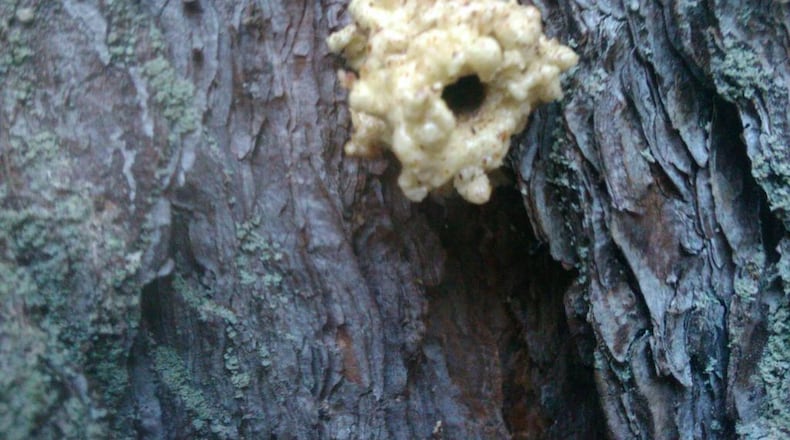Q: We recently had lightning strike a tree in our backyard. We had the tree chipped and used the chips for mulch. Six weeks later, we noticed two pines nearby oozing rosin from the bottom ten feet of the trunks. Did the chips attract more beetles? John Sugg, email
A: Yes, it would have been better not to spread the pine chips around your other pines. Fresh chips can attract beetles to healthy trees. Early-arriving beetles then exude a beetle attractant that brings in even more of the pests. Hire an ISA certified arborist (www.georgiaarborist.org) to assess the situation and decide whether spraying insecticide on your pines is warranted.
Q: Following a pruning of our camellia hedge the professionals did a deep root fertilization and recommended a second fertilization with a kelp product. What do you think? Pat Eubank, Atlanta
A: The use of biostimulants (including humic substances, seaweed extracts, and beneficial bacteria and fungi) in agriculture and horticulture certainly has a lot of marketing and hype associated with it. Although there is a lot of potential and hope, I have not yet seen research that shows conclusively the usefulness or effectiveness of biostimulants outside of a laboratory. It seems to me that you could achieve the same results using proper landscape management, including mulching and conventional fertilization.
Q: We have several five-year-old yaupon holly bushes. They seem to be healthy but have never produced berries. I have read that there needs to be a male bush nearby, but how do I tell what sex I have? Kathy Arasmith, email
A: It is true that yaupon holly, like all hollies, has both male and female forms. Both produce tiny white flowers in spring but they are small so you might never have noticed them. Female flowers will have a green (or red) swollen cone in the center of each flower. Male flowers lack the cone but they have several distinct short stamens with yellow pollen-bearing pads on the ends. I have all of the ins-and-outs of holly pollination at bit.ly/GAholly.
Q: My UGA Extension office says I have fusarium wilt on my tomatoes. I was thinking of laying plastic over the area and letting the sun cook the soil. John Gil, Covington
A: Solarizing the soil is a good option to control diseases and weeds but it takes several weeks of sunny summer weather to be effective. Till your tomato spot, then lightly irrigate. Scatter a few bricks or small plastic pots across the area, then stretch clear (not black) plastic sheet over it. Anchor the edges tightly with soil. Heat, formed when the sunlight hits the soil, is trapped under the plastic and warms the soil appreciably. Leave the plastic in place for at least four weeks.
About the Author
The Latest
Featured

